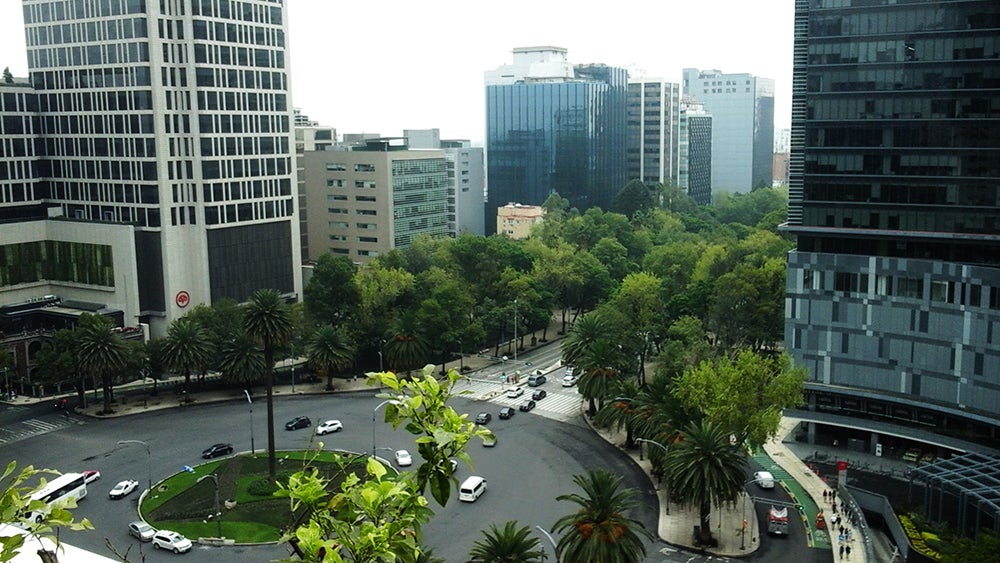What is a city? Have you ever asked yourself that question? We have all been in a city and we know how to distinguish one when we see it. A city is New York. A city is Bogotá. A city is Rio de Janeiro. But these are only examples and not a definition in itself. What makes these places ‘cities’? What elements present in them are those that we associate with the concept of a city? Buildings, people, streets, cars, commerce? …what make them a ‘city’? that there are many and agglomerated? That they are dense?
Ah, Density . That key concept … O’Sullivan, in his text “Urban Economy” (2009), tells us that a city is “a geographical area that contains a large number of people in a relatively small area”. Ed Glaeser follows this line by saying that cities are the absence of physical distance between people. So it seems simple: a city is a lot of people in a small space. But how many people are a lot people? How much space is a small space? How dense is dense? Every October 31, the United Nations commemorates World Cities Day. In the framework of this date, it is worth trying to answer these questions.
There is no universal criteria for the size or minimum density of a city. For starters, there isn’t even a single definition of what an urban area is. A quick look at UN urbanization statistics, the basis for calculating the urban population at a global level, shows that in some countries the criteria for defining an urban area is centered on the size of the population in a given administrative unit. For example, in Denmark, urban area is defined as a locality of more than 200 people while in Nigeria the base population for a locality to be considered urban is 20,000. Note that the differences between what is considered urban in each of these countries are not only in the population threshold but in the very definition of what is considered as a locality from the administrative point of view.
In other countries, the definition of urban area combines population with density. In the United States, for example, urban area is any population greater than 2,500 that has a minimum density of 500 people per square mile (about 193 inhabitants per km2). The same happens in Canada where the population should be 1,000 people and the density of 400 per km2. In China, on the other hand, the most important census criteria is density, being considered as an urban area any population with an average density of 1,500 people per km2.
Other definitions of urban areas privilege political concepts or the prevalence of certain economic sectors. For example, Taiwan defines an urban area as one that meets one of three criteria: a) Density of 300 inhabitants per km2 and at least 70% of the population engaged in economic activities other than agriculture; b) at least 2,000 inhabitants per km2; or c) presence of a seat of government or other public functions.
Thus, when we hear that the world is 55% urban or that Latin America and the Caribbean is the most urbanized developing region (with 80% of the population living in cities), we are adding different definitions of the concept of urban area. In a way we are adding apples and oranges…

Several methodologies have tried to overcome these limitations by proposing a uniform definition. For example, the World Bank proposes that an urban area is any one that has a density of 150 inhabitants per km2 and that is located 60 minutes or less from a settlement of at least 50,000 inhabitants. Although this methodology has the advantage of using common criteria, the variables included and their thresholds are still arbitrary: Why 150 inhabitants per km2? Why at least 50,000 inhabitants? Why at least 60 minutes?
This relativity is evident when observing that other methodologies use different definitions. For example, the OECD proposes a method that combines census factors to define the limits of urban centers and mobility factors to define conurbations and suburban areas that are functional parts of the same city. The first includes minimum densities of between 1,000 to 1,500 inhabitants per km2 and minimum populations of between 50,000 and 100,000 inhabitants (depending on the country). While, among the latter, a minimum percentage of 15% of trips per work between urban centers and their area of influence is included.
Although these differences may sound like something very technical, the truth is that its implications can strongly impact the territorial policies of a country. For example, in the case of Mexico, the World Bank methodology assumed a 68% urban population rate in 2000 while UN statistics indicated that it would be 75% (a difference of more than 7 million inhabitants). Similarly, the OECD methodology estimated an urban population rate of 58% for 2005 while that of the UN established 76% (a difference of 19.5 million people).
Thus, the city seems to be one of those concepts that can be distinguished, but not specified. That is why it may be better to define and celebrate the city not for what it is but for what it does in people’s lives. In that case, it is worth remembering the words of the great urban historian Lewis Mumford who wrote in his book “The City in History” (1961): “Perhaps the best definition of the city in its higher aspects is to say that it is a place designed to offer the widest facilities for significant conversation”
From the IDB we are promoting various territorial policies to promote adequate densities and urban interventions that provide the necessary equipment to make these densities work well. Learn more about our work here.
Video: Urban development: from emerging to sustainable cities in Latin America and the Caribbean


Muy interesante artículo!
Saludos
Luis Javier Castro